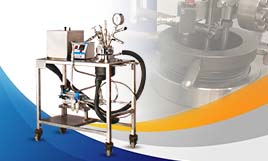Handheld / Portable XRF Spectrometry
XRF stands for x-ray fluorescence which is a process in which electrons are displaced from their atomic orbital positions and release energy burst which is characteristic of a specific element. By the detector in the XRF instrument, this release of energy is then registered which also categorizes the energy by element.
By an x-ray tube present inside the handheld analyzer, an x-ray beam having enough energy for affecting the electrons in the inner shells of the atoms. Then an x-ray beam is then emitted from the front of the handheld XRF analyzer. Then with the atoms of the sample, x-ray beams also interact by displacing the electrons from the inside orbit shells of the atom. The displacement is mainly a result of the difference in energy between the binding energy which holds electrons in their proper orbits and the primary x-ray beam emitted from the analyzer. Vacancies are left behind when the electrons are knocked out of their orbit and this makes the atom unstable. The instability must be immediately corrected by the atom by filling up the vacancies that are left behind by the displaced electrons. When an electron is dropping from a higher electron shell into another one that is closer to the nucleus, it will lose some energy.
The complete process of fluorescence can happen in small fractions of a second. Using a measurement of this process and a modern handheld XRF gun can be created in just a few seconds. The verified time which is needed for the measurement will mainly depend on the sample’s nature and the interest levels. In the Middle East, BCL can supply you with Handheld / Portable XRF Spectrometry devices from BRUKER.



.jpg)




